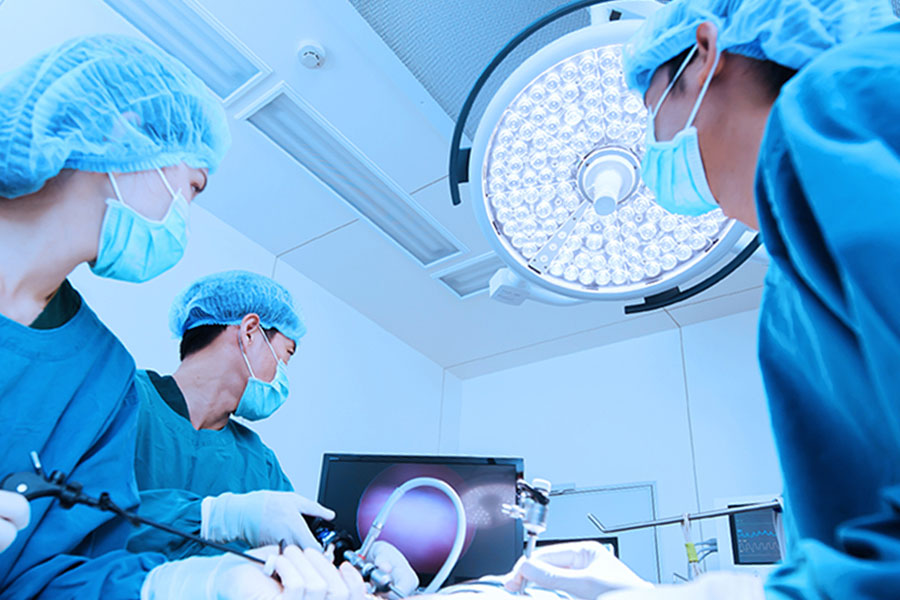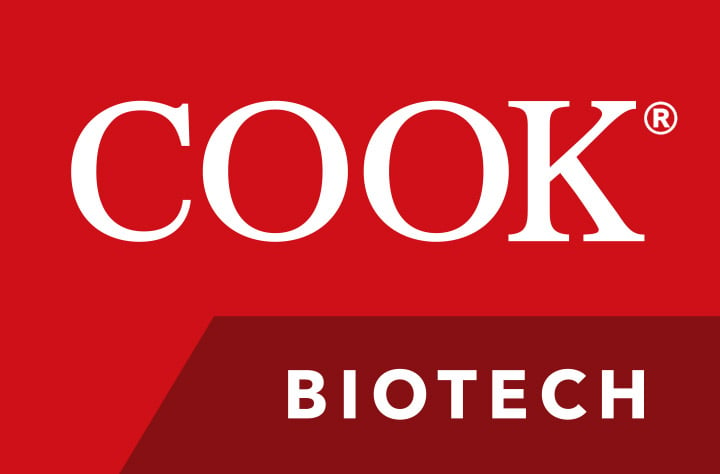
Study finds low recurrence rates in inguinal hernia patients treated with Biodesign® Inguinal Hernia Graft
Patient data was collected at one week, one month, three months, and one year post-operation. Ultrasounds or CT were used to determine presence of post-operative seroma, and data was collected through patient interviews to determine level of chronic pain, sensation, and recurrence. Pain was assessed on a visual analog scale (VAS) from 0 to 10, and patients with a score higher than four after six months were considered to be in “chronic” pain. After three months, only three patients in the TAPP group required aspiration of seroma fluid. VAS scores after six months were 2 to 3 in the Lichtenstein group, and those in the TAPP group were 1 to 2.
Use of Biodesign grafts in both procedures resulted in no instances of infection, foreign body sensation, intestinal obstruction or fistula. Only one recurrence in the 357 patients was observed.
INTENDED USE: Cook® Biodesign® Inguinal Hernia Graft is intended to reinforce soft tissues where weakness exists, including the repair of inguinal hernias. The graft is supplied sterile and is intended for one-time use.
Rx ONLY: This symbol means the following:
CAUTION: Federal (U.S.A.) law restricts this device to sale by or on the order of a physician.
INGUINAL HERNIA GRAFT: This symbol means the following: Inguinal Hernia Graft
This product is intended for use by trained medical professionals.
CONTRAINDICATIONS: This graft is derived from a porcine source and should not be used in patients with known sensitivity to porcine material.
WARNING: Higher recurrence rates but lower pain scores have been observed in the Biodesign® Inguinal Hernia Graft (BIHG) group when compared to the Polypropylene (PP) group in a recent U.S. clinical trial for tensionless Lichtenstein hernia repair. Detailed discussion of the results from clinical trials can be found in the Clinical Considerations section of the IFU. • Special surgical considerations aimed to reduce the risk of recurrence are outlined in the Instructions for Use section (Step 6) of the IFU. See step 6 for special instructions concerning positioning the graft around the spermatic cord. • As with all tensionless inguinal hernia repairs in obese patients, a higher risk of recurrence may exist. Therefore, alternative repair techniques may be considered when using this graft. • Whenever possible, avoid bridging of large hernia defects. • During the period of graft incorporation and new collagen formation, the repair has not reached its maximum strength. Allow 6 months required for graft resorption before resuming strenuous physical activity or weightlifting.
PRECAUTIONS: This device is designed for single use only. Attempts to reprocess, resterilize, and/or reuse may lead to device failure and/or transmission of disease. • Do not resterilize. Discard all open and unused portions of the graft. • The graft is sterile if the package is dry, unopened and undamaged. Do not use if the package seal is broken. • Discard graft if mishandling has caused possible damage or contamination, or if the graft is past its expiration date. • Ensure that graft is rehydrated prior to cutting, suturing, stapling, tacking, or loading of the graft laparoscopically. • Care should be taken to avoid damaging the graft when loading laparoscopically. It is recommended to load through a 10 mm or larger port. • Ensure that all layers of the graft are secured when suturing, stapling, or tacking. • Suturing, stapling, or tacking more than one graft together may decrease graft performance. • No studies have been conducted to evaluate the reproductive impact of the clinical use of the graft. • Place graft in maximum possible contact with healthy, well-vascularized tissue to encourage cell ingrowth and tissue remodeling.
POTENTIAL COMPLICATIONS: Possible adverse reactions with the use of any prosthesis may include, but are not limited to: • Adhesion • Fistula formation • Hematoma • Infection • Inflammation • Pain • Recurrence of tissue defect • Seroma formation. Complications, such as delayed wound infection, hernia recurrence, and the need for re-operation, should be reasonably expected in patients who are critically ill or who have severely contaminated wounds or strangulated hernias. Patients with significant co-morbidities and/or family history of inguinal hernia formation are more prone to hernia recurrence.
See package insert for full product information.
